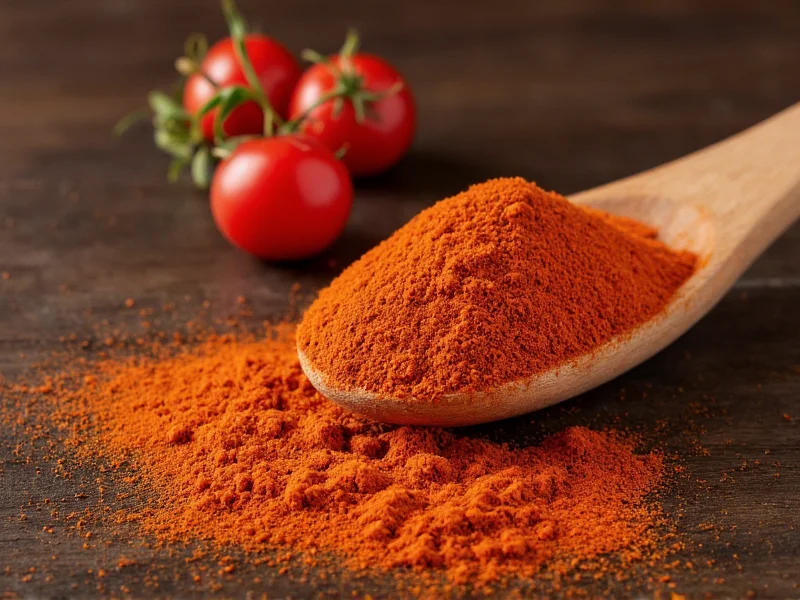Understanding the authentic components of gyro spice is essential for recreating this beloved Mediterranean dish at home. Unlike generic "gyro seasoning" products found in stores, traditional gyro spice relies on a balanced combination of aromatic herbs and warm spices that complement lamb, beef, or chicken without overpowering the meat's natural flavor. This guide explores the genuine ingredients, proportions, and techniques used in authentic gyro preparation across different Mediterranean regions.
The Essential Components of Authentic Gyro Spice
While regional variations exist across Greece, Turkey, and the Middle East, authentic gyro spice maintains a consistent foundation of key ingredients. The magic happens through the careful balance of these elements rather than any single "secret" component. Traditional preparation methods involve grinding whole spices fresh, which significantly enhances the final flavor compared to pre-ground alternatives.
Regional Variations in Gyro Spice Blends
Mediterranean cuisine features subtle but meaningful differences in gyro spice formulations depending on the region:
| Region | Primary Meat | Distinctive Spice Elements | Special Preparation Notes |
|---|---|---|---|
| Greek | Lamb | Higher oregano, lemon zest | Marinated 24+ hours with olive oil |
| Turkish (Döner) | Lamb/Beef blend | More cumin, less cinnamon | Vertical rotisserie cooking method |
| Lebanese | Chicken | Additional allspice, mint | Yogurt-based marinade component |
Creating Your Own Homemade Gyro Spice Blend
For the most authentic flavor, prepare your gyro spice blend from whole spices. This traditional approach captures volatile oils that pre-ground spices lose during processing. The following proportions create enough seasoning for approximately 2 pounds of meat:
- 2 tablespoons dried oregano (preferably Greek)
- 1½ tablespoons ground cumin
- 1 tablespoon garlic powder
- 1 tablespoon onion powder
- 1½ teaspoons sweet paprika
- 1 teaspoon black pepper (freshly ground)
- ½ teaspoon ground cinnamon
- ¼ teaspoon ground allspice
- 1½ teaspoons sea salt
To maximize flavor, toast whole cumin seeds and black peppercorns in a dry skillet over medium heat until fragrant (about 2 minutes), then grind with other whole spices before mixing with pre-ground ingredients. The difference in aroma and taste compared to store-bought blends is remarkable.
Application Techniques for Perfect Gyro Meat
The effectiveness of gyro spice depends significantly on proper application. For traditional results:
- Marination duration: Minimum 12 hours, preferably 24-48 hours for tougher cuts
- Fat content: Maintain 20-30% fat ratio in meat mixture for proper moisture
- Acid component: Always include lemon juice or vinegar in marinade (¼ cup per 2 lbs meat)
- Oil base: Use high-quality olive oil (⅓ cup per 2 lbs meat) to help spices adhere
- Layering: Apply spice mixture between thin meat layers when forming the traditional cone
Many home cooks make the mistake of using too much spice blend, which overwhelms the meat's natural flavor. Authentic gyro seasoning enhances rather than dominates—the meat should still taste primarily like quality lamb or chicken, with the spice blend providing subtle background notes.
Storage and Shelf Life Considerations
Homemade gyro spice maintains optimal flavor for different durations depending on preparation:
- Whole spice blends: Up to 1 year in airtight container away from light
- Pre-ground blends: Maximum 3-4 months before significant flavor degradation
- Marinated meat: 48 hours refrigerated is optimal; beyond this, texture deteriorates
Freezing marinated meat is possible but affects texture—thaw completely in refrigerator before cooking. For best results, prepare spice blends in small batches and use within one month for peak flavor.
Common Substitutions and Adaptations
When certain ingredients aren't available, these substitutions maintain reasonable authenticity:
- Dried oregano: Can substitute marjoram (use 25% less) or a blend of thyme and basil
- Ground cumin: Coriander can work in small amounts but lacks earthiness
- Paprika: Smoked paprika adds dimension but use half amount to avoid overpowering
- Allspice: A tiny pinch of cloves can substitute but changes flavor profile
For dietary adaptations, the spice blend itself contains no allergens, but always verify individual spice ingredients if preparing for those with sensitivities. The traditional blend is naturally gluten-free, vegan, and keto-friendly when used appropriately.
Final Considerations for Authentic Results
Mastering gyro spice requires attention to detail beyond just the ingredients. The cooking method significantly impacts how the spices express themselves—traditional vertical rotisserie cooking allows fat to baste the meat continuously, carrying spice flavors throughout. When adapting to home cooking methods, consider using a vertical roaster attachment for your grill or carefully monitoring temperature when using alternative methods to prevent spice burning.
What's the difference between gyro spice and shawarma spice?
While similar, gyro spice typically contains more oregano and less cumin than shawarma spice. Shawarma blends emphasize cardamom and turmeric more prominently, while traditional gyro spice features higher proportions of Mediterranean herbs like oregano with subtle cinnamon notes.
Can I use gyro spice for other Mediterranean dishes?
Yes, gyro spice works well as a versatile Mediterranean seasoning for grilled vegetables, hummus, Greek salads, and roasted potatoes. It's particularly effective as a rub for lamb chops or as a flavor enhancer in tzatziki sauce when used sparingly.
Why does my homemade gyro spice taste different from restaurant versions?
Restaurant gyro meat often uses specialized equipment (vertical rotisseries) that affects flavor development. Additionally, commercial blends may include MSG or additional preservatives. The meat-to-fat ratio and marination duration (often 48+ hours in restaurants) significantly impact final flavor compared to typical home preparation.
How can I make my gyro spice less salty?
Reduce added salt by 25-50% and compensate with additional garlic powder or onion powder. Remember that many store-bought spice components already contain salt, so using premium salt-free individual spices gives you better control over sodium levels while maintaining flavor complexity.
Does authentic gyro spice contain turmeric?
Traditional Greek gyro spice does not include turmeric, which is more characteristic of Middle Eastern shawarma blends. Some Americanized versions incorporate turmeric for color, but authentic Mediterranean preparations rely on paprika for coloration without the distinct earthy note of turmeric.











 浙公网安备
33010002000092号
浙公网安备
33010002000092号 浙B2-20120091-4
浙B2-20120091-4